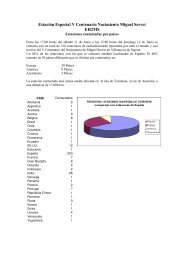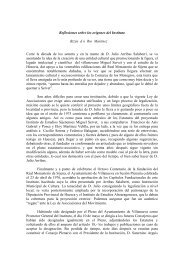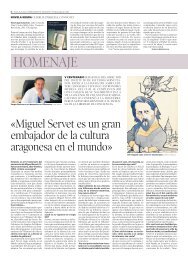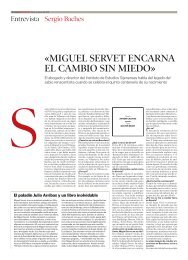New Page
New Page
New Page
You also want an ePaper? Increase the reach of your titles
YUMPU automatically turns print PDFs into web optimized ePapers that Google loves.
was inherited in the same natural way as human nature, we must accept the existence of two gods. This<br />
may have been a solution in the earlier periods of Dávid's Antitrinitarianism, but cannot be made to agree<br />
with the ideas of the Italian heretic. That may explain why he does not use it later either. Thus the thesis<br />
just quoted should be regarded as an passing attempt to have the new Christology agree with the older<br />
views.<br />
It is justified to suspect that the readers ignorant of Sozzini's explanations -- no doubt that they<br />
were the majority -- were inclined to the more traditional interpretation in the cases where Refutatio<br />
merely indicates the attitude of its source without quoting it in detail. In this respect the most important<br />
fact is that Socinian doctrine firmly distinguishes two kinds of creation. The first -- the creation of the<br />
world -- was exclusively the work of the Father while in the second -- the spiritual renewal of the world --<br />
the Father creates all by Christ. The confession in question keeps silent about that, nor does the whole<br />
work elaborate this distinction. In this way the expression creator de creatore [creator from creator] of<br />
the confession would inevitably get a traditional interpretation. It was at the most mitigated by at least a<br />
reference to the new interpretation of the expression in principio [in the beginning] -- as meaning the<br />
beginning of the preaching of the Gospel -- in the prologue of John's Gospel.<br />
It will hardly be possible to determine whether these vacillations were the result of the lack of<br />
thorough deliberation or of deliberate progression. For, on the one hand, the intention is clearly there to<br />
propagate the new ideas while upholding the appearance of continuity. And there was every reason for<br />
that as one of the major charges of their opponents against them was inconstancy.<br />
Nevertheless, it can certainly be established that Dávid was familiar with the basic ideas of Lelio<br />
Sozzini's Christology at the time of writing his work. Whether he had the version published later in De<br />
falsa et vera or merely the +rhapsodies" that, according to Schoman's testament, the Polish<br />
Antitrinitarians were learning the new Christology from would be hard to decide with any certainty. The<br />
following comment from Refutatio might allow the inference that by that time the collection of the works<br />
preaching the new Christology and the planning of further publications must have become very intensive.<br />
This is what Dávid writes, having listed the passages that prove, according to Melius, the preexistence of<br />
Christ and only partially refuting their interpretation by Melius: +We are not planning the full refutation<br />
of the explanations of the passages quoted because we have decided to discuss the explication of the<br />
Biblical places in a separate booklet: so now we can consider the following in these quotations."25 This<br />
harmonizes with all that can be known about the propagation of the new Christology on the basis of the<br />
researches of the last few years.26 It is becoming increasingly clearer that Eastern Central European<br />
Antitrinitarianism mastered this Christology in the 1560s as a result of the persistent and concerted propaganda<br />
of the Italian heretics. At that time one of the key figures of this propaganda, Blandrata, was<br />
constantly active in Transylvania, while others, like Gian Paolo Alciati spent shorter spells there, and<br />
connections were established with Niccolo Paruta's centre in Moravia as well. It is only natural that<br />
Ferenc Dávid was in a position to get acquainted with Lelio Sozzini's explanation and he made use of it in<br />
an individual way when replying to Melius.<br />
A joint Polish--Hungarian Antitrinitarian opus and Ferenc Dávid's Hungarian works<br />
For a satisfactory assessment of the other two works published in 1567 by Ferenc Dávid one<br />
should be able to see clearly in a number of issues the literature on the subject keeps debating about.<br />
Since the two works, particularly Rövid magyarázat, are very closely related to the publication entitled<br />
De falsa et vera unius Dei... cogitatione [On the false and true knowledge of the one God],27 first we shall<br />
have to consider the circumstances of its publication and the views concerning the authorship of its<br />
individual chapters. The literature on the subject has thoroughly discussed this very important publication<br />
of Transylvanian Antitrinitarianism, raising almost impossibly complicated questions.28 A facsimile<br />
14







